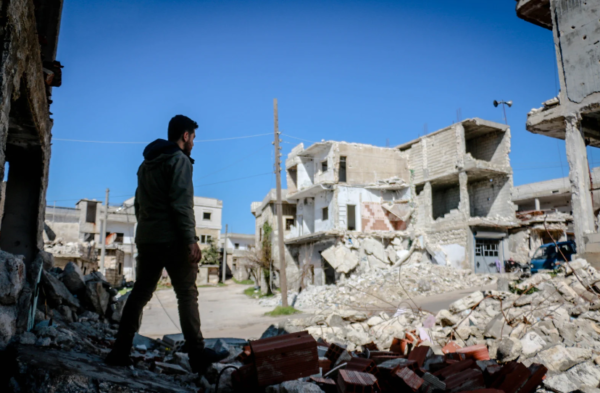How can I protect myself from earthquakes? Earthquakes—the very word can strike fear into the hearts of people all over the world, for they are a constant reminder of the unpredictability and sheer force of nature.
With the capability to strike at any moment and in any location, we must be equipped with the knowledge and resources necessary to safeguard ourselves, our loved ones, and our possessions from the destructive aftermath of these seismic events.
This comprehensive guide delves into the various precautions and how I can protect myself from earthquakes.
From the steps you can undertake before the seismic event to the measures you can implement during and after the quake, we aim to provide you with a well-rounded understanding of how to prepare for and withstand the impact of earthquakes.
So whether you’re a seasoned earthquake veteran or new to the idea of seismic preparedness, read on to discover how you can protect yourself from earthquakes and your loved ones from the potentially life-threatening effects of these powerful geological occurrences.
Read More: How to Inspect Your Building After an Earthquake?
Understanding earthquakes
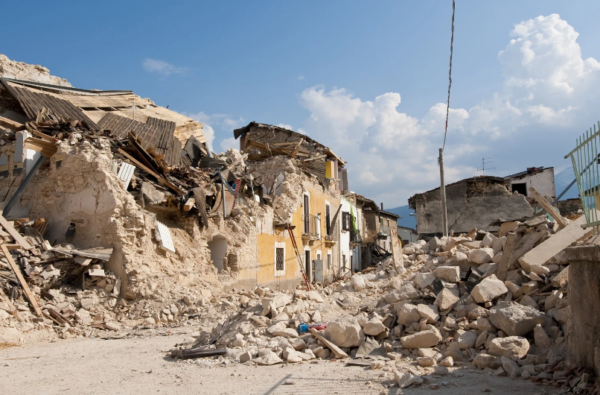
Before diving into precautionary measures, it’s critical to understand what earthquakes are and what causes them.
Earthquakes happen when there is a rapid release of energy in the earth’s crust, which causes seismic waves to shake the ground.
They can be caused by a variety of events, such as tectonic plate movements, volcanic activity, or even human-caused activities.
To gauge the intensity of an earthquake, scientists use the Richter and Mercalli scales.
The Richter scale measures the magnitude of an earthquake, while the Mercalli scale describes the intensity experienced by people and the impact on structures and the environment.
What is an earthquake?
How can I protect myself from earthquakes? first, you need to know what it is. An earthquake is a sudden release of energy in the earth’s crust, resulting in seismic waves that shake the ground.
These vibrations can cause buildings to collapse, landslides, and other destructive effects.
Types of earthquakes and their causes

Earthquakes are natural disasters that can strike without warning and are caused by a multitude of factors, each resulting in a distinct type of seismic event.
From the movement of tectonic plates to volcanic eruptions to human-induced explosions, how can I guard myself against earthquakes? something as varied as the causes of earthquakes and their potential for destruction.
Let’s start with the most common type of earthquake.
- Tectonic earthquakes occur due to the movement of tectonic plates grinding against one another, creating a buildup of tension.
When this tension is finally released, it results in a violent shaking of the ground, known as an earthquake.
- Next, there are volcanic earthquakes, which happen when magma, ash, or gas escape from a volcano, causing the ground to shake.
Collapse earthquakes are also a result of underground movement, but instead of being triggered by volcanic activity, they occur when mines, caves, or underground structures suddenly collapse.
- Explosion earthquakes, on the other hand, are caused by human activities such as nuclear explosions, chemical explosions, or even dam collapses. The explosive release of energy from these events can result in the shaking of the ground and an earthquake.
- Landslide earthquakes, as the name suggests, occur when a significant amount of rock or earth suddenly moves down a slope, causing the ground to shake. And last but not least, there are tsunami earthquakes, which happen when a large underwater earthquake triggers a tsunami, the movement of which can result in an earthquake.
The Richter scale and measuring the intensity of earthquakes
Developed by American seismologist Charles F. Richter in the 1930s, the Richter scale provides a quantifiable assessment of the volume of an earthquake.
On a logarithmic scale, each unit increase on the Richter scale represents a tenfold escalation in the amplitude of ground motion.
The Richter scale gauges the amplitude of the highest seismic wave recorded by seismometers during an earthquake.
They calculated the magnitude of the quake by taking the logarithm of the maximum amplitude of the seismic wave at a reference level, leading to the quantification of the earthquake’s size known as the Richter magnitude.
Causes of earthquakes
Earthquakes can occur due to various factors, including tectonic plate movements, volcanic activity, and human-induced causes like mining and reservoir-induced seismicity.
it’s important to know the causes of earthquakes to understand How can I protect myself from earthquakes.
Earthquake magnitude and intensity
Understanding earthquake magnitude and intensity is crucial for assessing the potential impact of an earthquake.
Magnitude measures the energy released during an earthquake, while intensity indicates the severity of shaking at a specific location.
Assessing Risk
Understanding seismic zones
Different regions have varying levels of seismic activity.
It’s essential to identify the seismic zone you reside in and understand the likelihood of earthquakes occurring in your area.
Read More: Types of Cracks on Walls Due to Earthquake
Assessing the risk
Knowing the level of seismic activity in your area is crucial for taking appropriate precautions. Identify if you live in an earthquake-prone region by consulting local geological surveys or seismic hazard maps.
These resources provide valuable insights into the frequency and intensity of earthquakes in specific areas, enabling you to assess the potential risks accurately.
Building a seismic-resistant home
Constructing or retrofitting your home to withstand seismic forces is paramount for earthquake protection.
When building a new house, consider selecting a suitable site away from fault lines, steep slopes, or liquefaction-prone areas.
Consult with architects and engineers experienced in designing earthquake-resistant structures to ensure proper construction techniques, including reinforced foundations, walls, and roofs.
Additionally, securing heavy objects such as water heaters, bookcases, and cabinets is vital. Attach them to the wall using brackets or straps to prevent them from toppling over during an earthquake.
Creating an emergency plan
Developing a well-thought-out emergency plan is crucial for ensuring everyone’s safety during an earthquake.
Establish a family communication strategy, including designated meeting points and emergency contact information.
Prepare an emergency kit containing essential supplies such as non-perishable food, water, first aid items, flashlights, batteries, and a battery-powered radio.
Identify and familiarize yourself with evacuation routes in your area, including safe shelters or assembly areas.
Practice drills regularly with your family members to reinforce the necessary actions to be taken during an earthquake.
Securing furniture and fixtures
Unsecured furniture and fixtures can become hazards during an earthquake.
Anchor heavy furniture like bookshelves, dressers, and televisions to the wall using brackets or straps.
Install safety latches on cabinets to prevent them from swinging open and causing injuries.
For appliances such as refrigerators or washing machines, use safety straps to prevent them from tipping over.
Ensuring structural safety in existing buildings
If you reside in an older building, it’s essential to assess its structural integrity and consider retrofitting options.
Consult with a professional engineer who specializes in seismic evaluations to identify potential weaknesses and recommend appropriate retrofitting techniques.
Common methods include strengthening foundations, adding braces or shear walls, and improving connections between different structural elements.
Training and drills
Participating in earthquake drills is an effective way to enhance your preparedness and response capabilities.
Familiarize yourself with the “Drop, Cover, and Hold On” technique, which involves dropping to the ground, taking cover under a sturdy piece of furniture,
and holding on until the shaking stops. Practice this technique in various settings, such as at home, at work, or in public spaces.
Read More: How to Get Synthetic Monitoring to Work in new relic
Protecting yourself during an earthquake
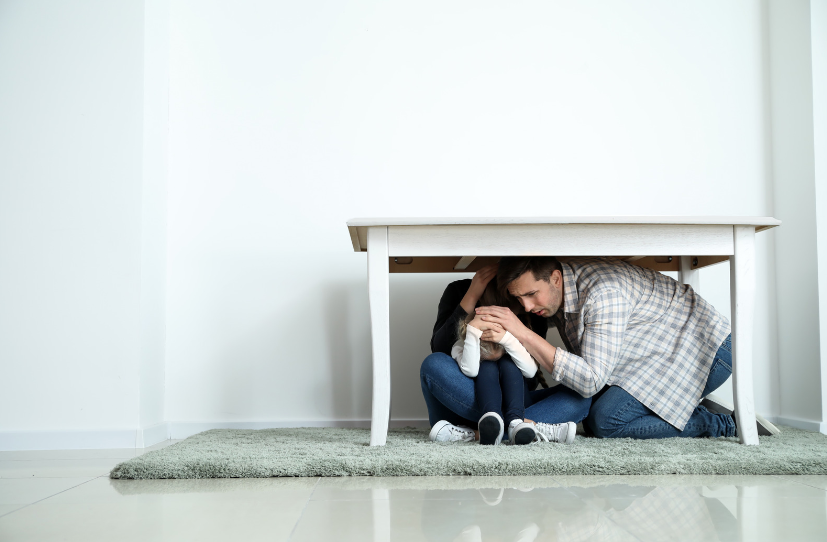
When an earthquake happens, it is critical to take urgent protective measures.
Avoid windows, glass, and large things that might pose a hazard when indoors. Determine safe areas, such as behind a strong table or desk, and seek refuge there.
Stay in your secure location and cover your head and neck with your arms until the shaking stops.
In some cases, evacuating the building may be essential, particularly if there are structural issues or urgent dangers.
Follow the authorities’ recommendations and become familiar with the quickest and safest evacuation routes.
Drop, cover, and hold on.
During an earthquake, seek shelter under a sturdy piece of furniture and protect your head and neck. Stay away from windows, exterior walls, and objects that may pose a hazard.
Staying away from hazards
Be mindful of potential hazards during an earthquake, such as falling objects, broken glass, or gas leaks. Stay away from power lines, chimneys, and unstable structures.
After an earthquake
Checking for injuries
After an earthquake, check yourself and others for injuries. Provide first aid as needed, and seek medical assistance for more severe injuries.
Assessing damage
Inspect your property for any damages. Check for cracks in walls, gas leaks, or electrical hazards. If necessary, contact professionals for assistance with repairs.
Dealing with utilities
Turn off the gas, electricity, and water supplies if you suspect damage or leaks. Follow the necessary procedures and contact utility companies for assistance.
Read More: How often do you take a cat to the vet
Learning how to drop, cover, and hold on during an earthquake
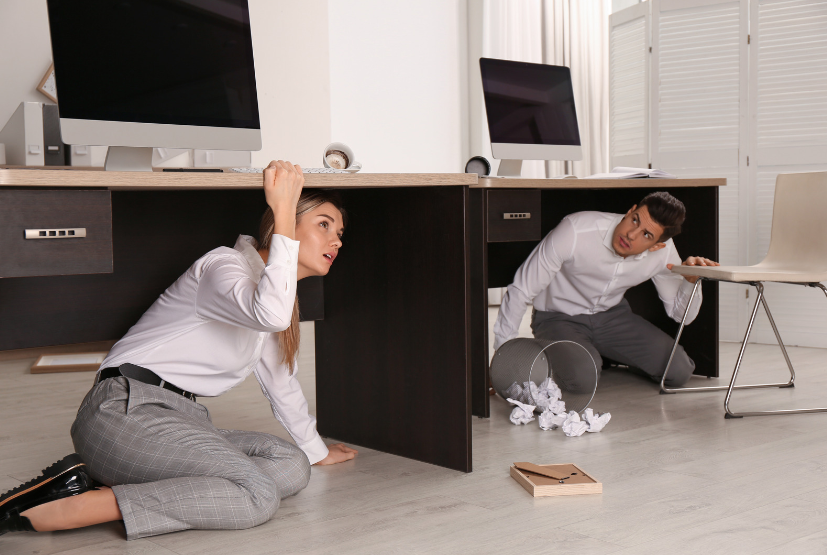
An earthquake is a natural disaster that can strike without warning, causing significant damage and posing a threat to human lives.
Learning how to protect yourself during an earthquake is essential to increasing your chances of survival and minimizing potential injuries.
One of the most effective techniques recommended by experts is the “Drop, Cover, and Hold On” method.
Importance of dropping, covering, and holding on
When an earthquake strikes, the immediate instinct of many people is to run or panic. However, this can often lead to more injuries and accidents.
The “Drop, Cover, and Hold On” technique is widely recommended by experts and emergency response organizations as the most effective way to protect yourself during an earthquake.
It helps to minimize the risk of being injured by falling objects, collapsing structures, or other hazards.
Protecting yourself during an earthquake
The primary goal of the “Drop, Cover, and Hold On” technique is to keep yourself safe during the shaking of an earthquake.
By dropping to the ground, taking cover under a sturdy piece of furniture, and holding on until the shaking stops, you can significantly reduce the chances of sustaining severe injuries.
It is crucial to avoid doorways, windows, and exterior walls during an earthquake, as they can be unstable and pose additional risks.
Steps to drop, cover, and hold on
Implementing the “Drop, Cover, and Hold On” technique involves following a few simple steps. Remember, the key is to act quickly and decisively to protect yourself.
Drop to the ground.
As soon as you feel the shaking of an earthquake, drop to the ground to prevent being knocked over by the force. Drop onto your hands and knees to maintain stability and balance.
Take Cover
Next, seek immediate cover under a sturdy piece of furniture such as a table, desk, or bed.
If there is no furniture nearby, move to an interior wall away from windows and heavy objects that could fall.
Protect your head and neck by covering them with your arms and hands.
Hold On
While under the cover, hold on firmly to the furniture or object you are taking cover beneath. This will provide additional protection and prevent you from being displaced by the shaking.
Be prepared for aftershocks, which are smaller tremors that can follow the main earthquake.
Read More: How To Cure Plantar Fasciitis in One Week
Practice and preparedness
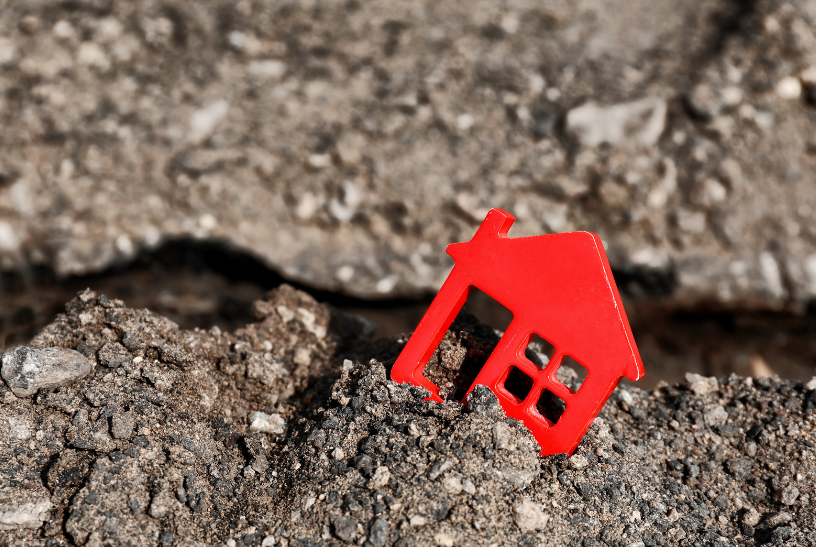
To ensure your safety during an earthquake, it is essential to practice the “Drop, Cover, and Hold On” technique and be prepared for such emergencies.
Earthquake Drills
Participating in regular earthquake drills can help you become familiar with the actions needed to protect yourself.
Schools, workplaces, and communities often organize drills to practice emergency procedures. By rehearsing the steps in a controlled environment, you will be better prepared to respond effectively during an actual earthquake.
Securing Furniture and Objects
Another critical aspect of earthquake preparedness is securing heavy furniture, appliances, and objects in your living space.
By properly anchoring them to the walls or floor, you can prevent them from toppling over and causing injury during an earthquake.
Identify potential hazards in your home and take the necessary measures to secure them.
Staying Safe After an Earthquake
Once the shaking stops, it’s important to remain cautious and take the necessary actions to ensure your safety.
Checking for injuries
First and foremost, check yourself and others for any injuries.
Attend to immediate medical needs and call for professional help if required.
If you encounter someone trapped under debris, avoid moving them unless necessary, as this can worsen their injuries. Instead, provide comfort and reassurance until help arrives.
Assessing Damage
After confirming everyone’s safety, assess the damage to your surroundings.
Be mindful of potential hazards such as gas leaks, downed power lines, or structural instability. If you notice any of these dangers, evacuate the premises and inform the appropriate authorities.
Staying informed about local emergency response plans and procedures
So, following the procedures of What methods can I use to protect myself during earthquakes? It is critical to be knowledgeable about local emergency response plans and procedures when preparing for an earthquake.
In the event of a natural catastrophe or emergency, it is critical to have a clear understanding of what to expect and how to respond. This information may help you make educated decisions about your own and your loved ones’ safety, as well as aid you in promptly escaping and finding a safe haven.
The Benefits of Knowing Local Emergency Response Plans
Learning about the emergency response tactics in your area will help you understand what to expect and how to react in the event of an unexpected disaster.
Finding and Understanding Emergency Response Information for Your Area
One must place a high priority on locating emergency response specifics that are unique to their location, such as evacuation routes and designated safe-havens.
Staying up-to-date on emergency response procedures and updates
Because emergency response plans are subject to change, it is necessary to prioritize the duty of monitoring for updates and adjustments on a regular basis.
Participating in Emergency Drills and Training Opportunities
Participating in emergency exercises and training opportunities can give you the confidence and preparation you need to handle a genuine catastrophe.
Conducting evacuation exercises with your family or coworkers is an important component of earthquake preparedness if you want to know how to protect yourself from earthquakes. These exercises will help you become acquainted with safe evacuation procedures and learn how to respond quickly and effectively in the event of an earthquake. You may improve your preparation and confidence while also ensuring your safety by devoting time to developing and carrying out successful evacuation exercises.
The Importance of Evacuation Drills
The importance of evacuation exercises in preparing people for emergencies cannot be emphasized, since they allow them to practice and fine-tune their evacuation strategies.
Individuals can establish familiarity with escape routes and procedures, identify potential challenges and hindrances, and cultivate a sense of certainty and preparation by simulating a true emergency scenario.
Earthquake mitigation is synonymous with community preparation. This involves teaching people about what to do in an earthquake, performing frequent drills and exercises, and ensuring that emergency response procedures are in place.
Effective evacuation exercises need careful planning and preparation.
Involving all members of the home or workplace, defining escape routes and assembly sites, and conveying the procedures to follow the plan.
Drilling in multiple settings and times of day may also assist uncover possible difficulties and enhance overall preparation.
Continuously reviewing and improving evacuation procedures
Frequently executing evacuation drills and persistently examining and enhancing the protocols are indispensable in guaranteeing the earthquake safety of all individuals involved. Feedback from participants, modifications to the structure or adjacent region, and advancements in emergency response technology are all factors that might require updates to the evacuation procedures.
Read More: Self Car Wash: How To Use it
Seeking professional advice
take help from a professional to get your objective for How can I protect myself from earthquakes.
Local authorities and earthquake safety organizations can provide valuable guidance and resources to enhance your earthquake preparedness.
Consult with them to gain further insights into the specific risks in your area and receive advice on additional protective measures you can undertake.
to know to inspect your house you need experts in this field and by doing that you are taking our tips on How can I protect myself from earthquakes.
Conclusion
in conclusion for our guide on How can I protect myself from earthquakes. We can considerably raise our chances of safety and minimize damage by knowing the nature of earthquakes, estimating the hazards in our location, and applying precautionary measures.
Building earthquake-resistant houses, developing emergency plans, securing furniture, engaging in drills, and getting expert guidance are all critical measures in preparing for an earthquake.
Remember that being proactive and prepared is essential for protecting yourself and your loved ones.
MORE TOPICS
elasticity allows us to improve upon our understanding of supply and demand
Poor blood circulation in the legs
FAQS
Building collapses, fires, gas leaks, and power outages are some of the most common risks associated with earthquakes.
To prepare your home for an earthquake, it is recommended to secure heavy objects, install seismic straps, and secure your water heater.
A disaster supply kit for earthquakes should include essentials such as water, non-perishable food, first aid supplies, flashlights, and a battery-operated radio.
During an earthquake, it is recommended to drop to the ground, take cover under a sturdy table or desk, and hold on until the shaking stops.
To protect yourself while sleeping during an earthquake, it is recommended to secure heavy objects and keep a flashlight and sturdy shoes next to your bed.
To evacuate safely during an earthquake, drop to the ground, take cover under a sturdy table or desk, and evacuate the building if necessary.
Yes, securing heavy objects to the wall using earthquake putty, brackets, or straps can help prevent them from falling or causing damage during an earthquake.
Yes, hiring a professional engineer to perform earthquake retrofitting measures on your home can significantly improve its earthquake resistance.

